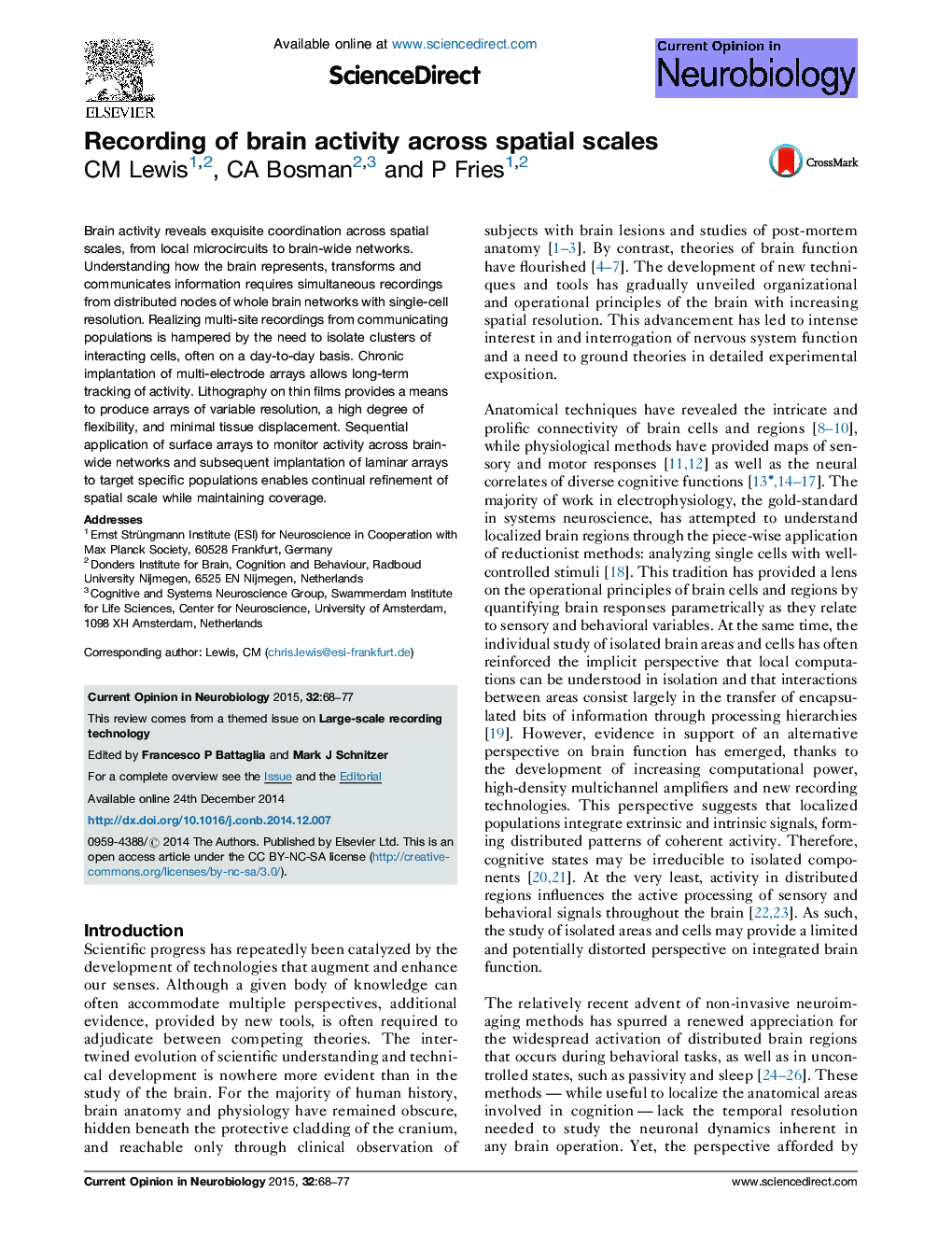| Article ID | Journal | Published Year | Pages | File Type |
|---|---|---|---|---|
| 6266315 | Current Opinion in Neurobiology | 2015 | 10 Pages |
â¢Brain activity is highly structured within local and distributed circuits.â¢Understanding brain function requires simultaneous recording across spatial scales.â¢Multi-electrode arrays allow targeted recording from local and distributed circuits.â¢Wide sampling allows identification of distributed networks and topographic mapping.â¢Targeted dense recording allows integration of local and distributed dynamics.
Brain activity reveals exquisite coordination across spatial scales, from local microcircuits to brain-wide networks. Understanding how the brain represents, transforms and communicates information requires simultaneous recordings from distributed nodes of whole brain networks with single-cell resolution. Realizing multi-site recordings from communicating populations is hampered by the need to isolate clusters of interacting cells, often on a day-to-day basis. Chronic implantation of multi-electrode arrays allows long-term tracking of activity. Lithography on thin films provides a means to produce arrays of variable resolution, a high degree of flexibility, and minimal tissue displacement. Sequential application of surface arrays to monitor activity across brain-wide networks and subsequent implantation of laminar arrays to target specific populations enables continual refinement of spatial scale while maintaining coverage.
